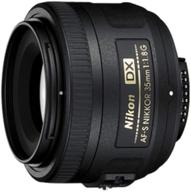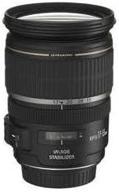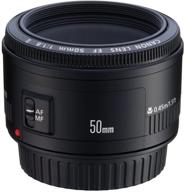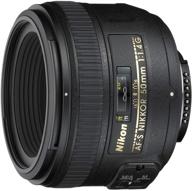- Size and weight 2. Workmanship 3. Good background blur. 4. Lack of vignetting wide open, at least on crop (no chance to try on full frame) 5. The new STM motor runs almost silently. 6. Precise autofocus
- Sometimes chromatitis, but not much, the methods of treatment are software.
- Fast autofocus, compact size and weight, excellent workmanship, sharpness, good picture.
- 10is a bit expensive, but it works out every.
- Value for money / picture quality Compact, lightweight Focus (STM)
- I'm not a pro, so I couldn't find anything to complain about) I think aperture 2.8 can be attributed here
- For this money it's gorgeous. - Best price/quality balance - small. With it and a flash like the Speedlite 90EX, the large 5DM3 will even fit in a small purse - you can walk with it as with the only one and shoot if the dimensions of the camera are critical - does not chromate - good focus - working 2.8 - metal mount to bayonet - accurate autofocus
- - STM motor (buzzing, not suitable for shooting video, slower focus than USM) - made in Malaysia (all L's are made in Japan)
- Good picture, the design is better than that of the direct competitor 50mm 1/8, small, fits into a small bag. Beautiful bokeh.
- Small manual focus ring, but rarely needed. When you take out the camera, it doesn't look cool compared to the big whale ones.
- Great lens for little money! Sharp, fast, quiet. Beautiful bokeh. Yuzayu just a week, I can not play enough!
- Not found
- light, sharp, aperture, fixed, low price
- slow
- Very sharp. Very compact. Silent. Adequate cost.
- Is it just the appearance. It looks undignified on the camera, especially for those who do not understand anything in photography.
- Compact, sharp (the sharpness is certainly not enchanting, but worthy), convenient for shooting indoors.
- Focus is slow. Not for action scenes.
- The question of whether to take a camera with you is no longer; Tenacious and accurate autofocus, a little slower than the older fifty dollars, but much faster than the younger one, and even without nuts in the bokeh; Worth every spent on it.
- I would like internal focusing, more aperture, faster autofocus, but, I repeat, the price is more than adequate and these are nit-picking that do not affect the result!
- 1. Very high optical characteristics - no aberrations are noticeable, sharp from f / 2.8, resistant to hares, high contrast, distortion is not visible. 2. Very compact lens. You can carry all the time on the camera instead of the cover. :) People pay less attention to you. 3. A very attractive price - for 5,000 a great option. 4. Good body, steel bayonet. 5. Autofocus is quite acceptable in terms of speed. 6. Round diaphragm does not make nuts. 7. The electronic drive of the manual focus ring (it has no mechanical connection with the lens unit and only controls the STM drive) allows you to manually adjust the autofocus during the entire time the electronic drive (FTM) is running - that is, with the slider set to AF, you can manually tighten the focus when half-pressed shutter release button (as long as the STM drive is activated).
- 1. Not too high aperture - f / 2.8 is noticeably not enough for pampering with bokeh, especially at such a short focal length. 2. Bokeh is harsh relative to fifty dollars on the same apertures. Relative to the Olympus OM 40/2.0, the bokeh is also harsh on similar apertures. Bokeh is pockmarked, slightly rattling. 3. Autofocus is not as fast as USM, and most importantly - it makes a sound. Not buzzing, of course, like conventional micromotors, but not completely silent either. 4. Focusing exclusively through STM. The manual focus ring is electronic and only controls the focus motor. So you should forget about silent video recording even with manual focus.
- Sharp, compact, lightweight, inexpensive
- Focusing
- Good color reproduction, accurate and fairly fast focus, strong contrast, almost immune to flare
- Slightly dark, small geometric distortions, no manual focus drive (does not work when the carcass is turned off, in manual mode it is slightly late)
- I agree with previous commenters The weight Price Sharpness incl. at f/2.8 autofocus bokeh Silent workmanship Colors
- When wearing a camera with this lens, the center of gravity shifts around the neck and the camera screen touches outer clothing, and care must be taken that there are no buttons, zippers, chains, etc., so as not to scratch the screen.
- quality, sharpness
- not good for video
- Which lens to take 40 / 2.8 or 50 / 1.8? REGULARLY, a very important task arises for almost all owners of DSLRs = to make the camera smaller and lighter, while being able to photograph most subjects the problem is solved by two lenses *EF 40mm f/2.8 *EF 50mm f/1.8 BOTH of these lenses are EXTREMELY light, with them the camera becomes CLEARLY more wearable and fits into small bags, you can carry it under a jacket. BOTH of these lenses are universal, the so-called "standard" - they are more or less suitable for both landscapes and portraits. The differences between them are not categorical. === Advantages 40/2.8 Makes the DSLR clearly lighter and more compact - the main ESSENCE of this model Good autofocus - better than the competitor 50 / 1.8 Metal mount, normal design - better than the competitor 50 / 1.8 Bokeh - better than competitor 50/1.8 For crop 1.6 - it can become universal and replace the regular 18-55 (but 50 / 1.8 cannot)
- Weak aperture - only 2.8 vs. 1.8 (darker viewfinder, weaker portraits) Autofocus ONLY motor, no fully manual mode (see detailed review) I would like a stub Looks very comical in terms of design.
- 1. Excellent image quality 2. Versatility 3. Compactness
- Look for them yourself, you can find fault with anything .
- Compact, quiet, cheap.
- Correspond to the price.
- Focal length, size, sharpness, price.
- There are no shortcomings, there are features that you quickly get used to.
















